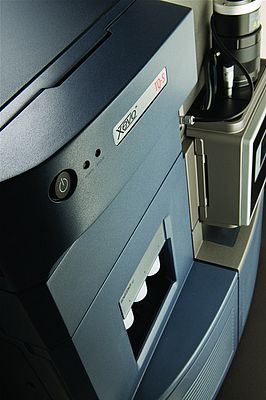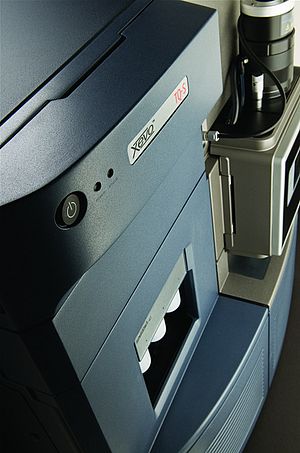The combination of a mass spectrometer and an advanced separation system allows for an analytical technique to rapidly determine residue levels of the fungicide carbendazim in orange juice, with no sample preparation, at regulated levels.
Recent news about the presence of the fungicide carbendazim in orange juice products has drawn wide spread public attention on the safety of the fruit juice. Carbendazim is legally used in Brazil and many other countries for plant disease control, post-harvest food storage or transportation, and seed pre-plant treatment. However, it is not approved for use on citrus fruits in the United States and therefore is not permitted to be present at any concentration in orange juice. The U.S. Food and Drug Administration has since responded by holding and testing all shipments of incoming orange juice products from all foreign sources as of January 13th, 2012. Waters scientists have responded rapidly to this challenge by issuing this simplified method of analysis.
"Key to this analytical application is the unrivalled sensitivity of the Xevo TQ-S coupled with the ACQUITY UPLC I-Class which allows scientists to employ a 'dilute-and-shoot' approach to orange juice analysis," said Dr. Paul Young, Senior Director, Food & Environment Business Operations, for the Waters Division. "The obvious benefits of dilute-and-shoot are increases in analysis throughput and reduction in method development time, which is especially valuable to scientists who need to meet urgent analytical requests."
Many published methods are capable of analyzing fungicides, including carbendazim, in fruit juices in the low ppb range. However, intensive sample preparation is required in order to remove possible interferences and to enrich the analytes. An approach that requires no sample preparation can be realized because of the sensitivity of the Xevo TQ-S MS coupled with ACQUITY UPLC I-Class, and the specificity of a tandem quadrupole MS.


















